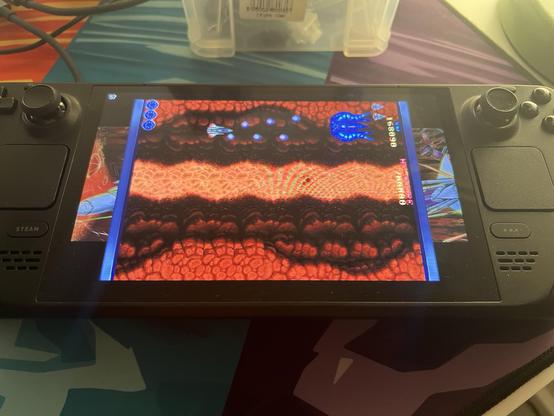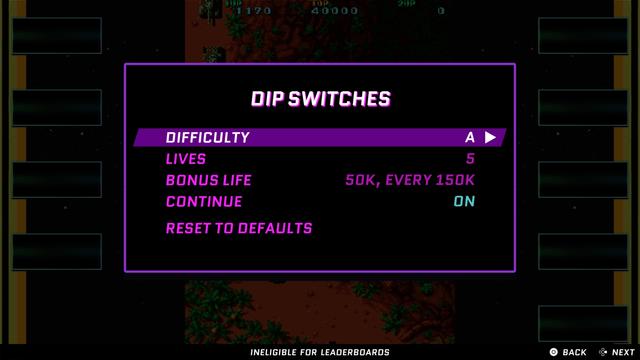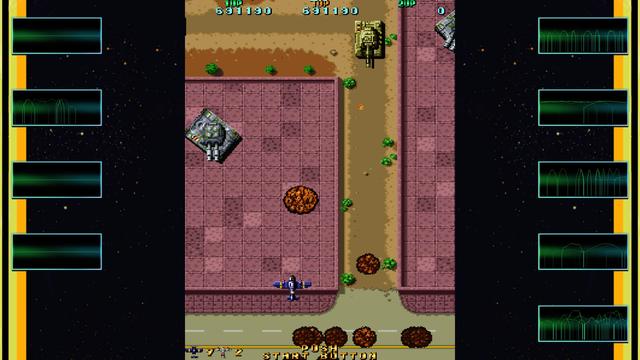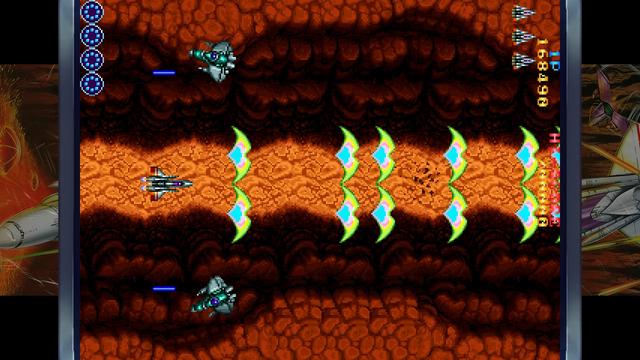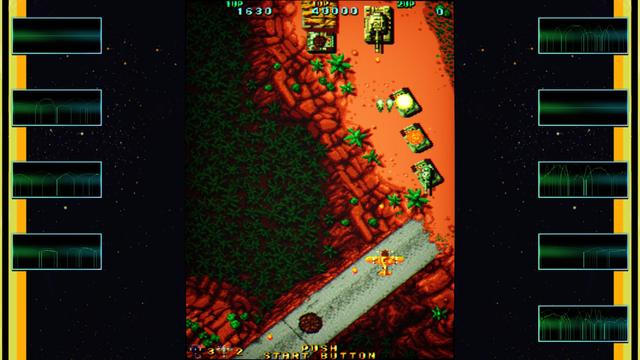TOAPLAN Arcade Collection Vol 1 & 2 for PlayStation 5 Review
I’m no stranger to horizontal or vertical scrolling shooters, but my experience mostly starts and ends with those on the Commodore 64 with maybe a dash of Ikaruga on the Dreamcast. And Galaga while Ridge Racer loaded on the PlayStation.. If that counts?
As such I came into TOAPLAN’s Arcade Collection not with nostalgia and a strong urge to play arcade classics that I remember fondly, but with curiosity. I wanted to see how games like 1942 and a long list of magazine cover demos I can’t recall the names of compared.
Steaming TOAPLAN Arcade Collection from my PS5 to the Steam Deck, applying a 270 degree rotation and then remapping the Steam Deck controls to compensate 🤣
Coming in cold with no expectations led to two realisations. The first was very immediate: good grief these games are hard. There’s a certain flow to dodging projectiles, and a very strong need to manage the number of onscreen enemies aggressively. If you don’t keep on top of the onslaught of tanks or planes or boats then you’ll be – as I frequently found – quickly overwhelmed. Quite often this is as much due to the sheer number of projectiles as the very cozy, very restrictive play area. These classics are claustrophobically sized, rarely giving you the opportunity to outmanoeuvre bullets without planning multiple moves in advance. It’s really easy to get pinched in a corner with no escape.
Fortunately these Arcade Collections expect players to be absolutely rinsed by their unforgiving difficulty and add first class button inputs for both rewind and slow down. These options are almost too tempting to ignore, though holding the slow button for an entire run can get a little uncomfortable.
For the most part, though, they go too far. I would have loved the game speed to be a global setting with perhaps three to four choices from normal down to very slow. Holding the slow button might be taxing in itself, but it absolutely trivialises most of the games and makes weaving in and out of projectiles and planning ahead much, much easier. It’s not true of them all, however, and I’ve found myself unable to cope with some boss fights (two giant tanks that fire two types of overlapping projectile aaaah!?) even with slowdown.
This is where rewind comes in. It’s so readily accessible and outlandishly convenient that it almost becomes a part of the game, another string in the bow to turn planning ahead into a sort of god-like power, like Nicholas Cage’s Cris Johnson exploring future possibilities in the maligned movie Next. The ability to rewind can reveal just how incredibly difficult some situations are to worm out of, but you can trial and error your way out of a bind so quickly that it becomes second nature. A rewind invalidates your highscore, though, so consider it your training wheels.
Indeed after a while of slowing down and rewinding I found myself getting the hang of the games and many of the vertical shooters share a movement pattern that seems to work for me. I still get pretty rekd, but less so.
On top of rewind and slow down there’s a speed up button. This seems illogical at first but it was handy for skipping over some of the drawn out intro sequences. If, like me, you start out with all the skill of a mouldy lemon then you’ll see these a lot.
There’s also auto-fire which simply spams bullets as fast as the game is able. In many games the speed you can spam shots seems to increase as you near the top of the screen- presumably because there’s a hard limit to the number of active bullets you can have on screen (ah, hardware sprites maybe? The good ol’ days!) and closer to the top they get recycled quicker. In practice this means, or at least seems to, that hugging the top of the screen and rapid firing the top-side of a boss will get you through just a little quicker. The same for quickly clearing enemies entering at the top- but don’t be deluded into thinking enemies are going to be polite and not some at you from absolutely every angle. Aargh!
DIP Switch settings. What more could you want?
It’s at time of writing this review that I finally discovered both the Dip Switch and Assist options in the game menus. I must admit I was having way too much fun stomping through some of the games and exploring the surprising variation on the genre to spelunk into the menus. Dip Switches are the little two-position switches presumably on an arcade game PCB or somewhere not easily accessible to prying hands. These control the overarching difficulty of the game including the availability of lives, bonuses and continues… y’know, tuning the gentle balance between player frustration and their willingness to pour extra money into the machine? In this instance, though, your money has already been spent so consider these an extra level of challenge, or a means to dial in that authentic-to-you arcade experience. The difficulty Dip Switch is labelled A, B, C, D and I think this runs from easiest to hardest… someone will correct me, I’m sure!
Per-channel audio visualisation is completely superfluous but... also c'mon who hasn't watched one of those C64 SID tune videos with the waveform vis.
I should probably also applaud the menus for being rammed full of more options than I could ever possibly want. Bitwave Games (who also put out Gimmick! Special Edition) have really outdone themselves here. For example you can set the display overlay to include an audio channel visualisation. Useless, but cool! There are also a bizarre array of options for tuning the audio output including low and high pass features, reverb and echo- I found a low pass with a really low cut (1000Hz or so) made some of the game sound effects a little less grating… sorry fans.
You can also fine tune autofire fire with a number of on and off frames. In Virmana, for example, you have a charged shot with a wide spread. Maxing out the autofire “on frames” can just charge just enough to spread your fire into a ridiculously effective cone that helps you avoid direct shots while covering two thirds of the screen in bullet hell.
Turnin' a vertical shooter landscape, woo! So much better. Wait, what's going on with the controls!? 😭
You can even apply a 90 or 270 degree rotation to the display output, turning a vertical shooter squeezed into the middle of your screen into something that almost fills a 16:9 ratio. You’re stuffed if you can’t actually rotate your screen, though, because this does not remap the controls and I was unable to find any means to do so. Except most of the time I play my PS5 via the Steam Deck so I could just remap the D-Pad from Up, Down, Left, Right to Right, Left, Up, Down for 90 degrees or Left, Right, Down, Up for 270. Suffice to say 270 degrees- with the play field running from left to right – was by far the most intuitive feeling, though sadly this loses the overlays which no longer fit on the screen.
Scanline video rendering for a more retro feel. There's even a little vignetting at the edges and a little gentle simulated CRT curve.
Suffice to say I enjoyed delving into these unknown-to-me arcade classics, and I’ll enjoy them more rotated into landscape and remapped via the Steam Deck… but Bitwave… can we get some D-Pad and Analog stick remapping to match the rotation please? This setup is very confusing when I’m trying to browse the menus or the rest of my PlayStation!
Would I have appreciated a single collection with all the games? Sure. Is there enough here to justify a £30 RRP, or £60 combined? Maybe. Were these games hilariously addictive, leading me to miss half of the menu settings and have to scramble to write this review… uh… yes.
